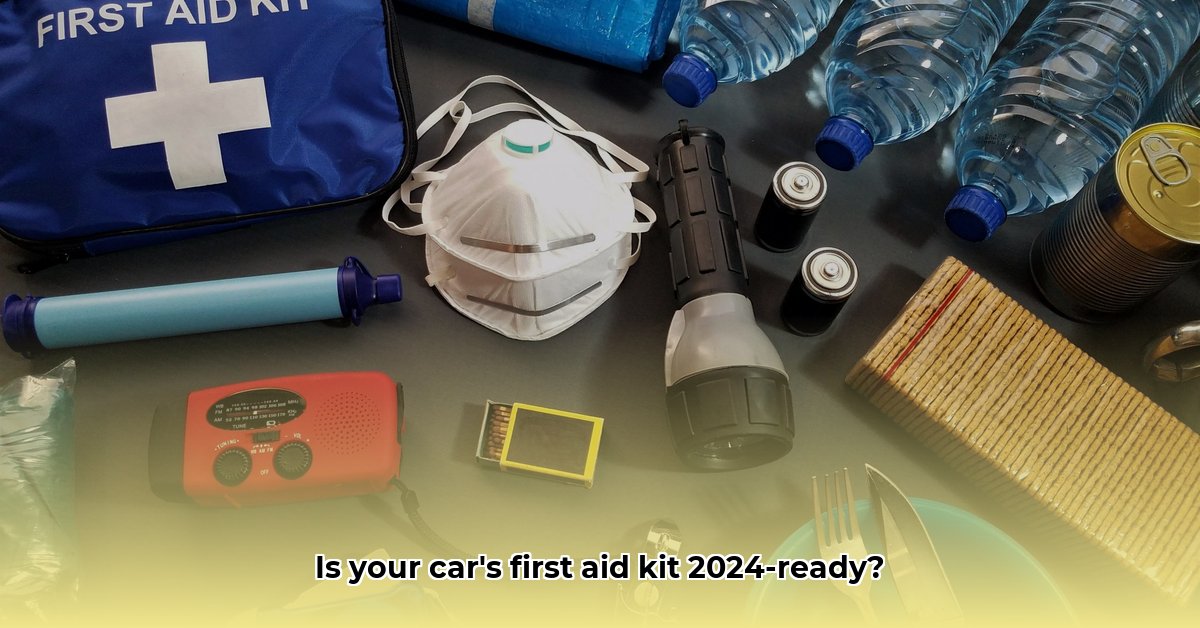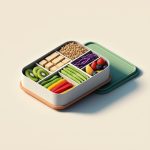Why a Car First Aid Kit is Essential
Imagine: a tire blowout miles from civilization, a fender bender on a deserted road, or a sudden bout of car sickness with no pharmacy in sight. A well-stocked car first aid kit can transform you from a worried driver into a capable first responder. It’s about more than just bandages; it’s about peace of mind, knowing you can handle minor medical mishaps on the road.
Building Your Car First Aid Kit: A Step-by-Step Guide
Step 1: Choosing the Right Container
Select a sturdy, waterproof, and easily accessible container. A small backpack, a repurposed lunch bag, or even a fishing tackle box can work well. The key is durability and organization.
Step 2: Essential Medical Supplies
- Wound Care: Assorted adhesive bandages (various sizes), antiseptic wipes, gauze pads (various sizes), medical tape, roller bandage, scissors, tweezers. Butterfly closures can be beneficial for deeper cuts, but proper usage knowledge is crucial. Hydrogel bandages can soothe burns. Some experts also recommend saline solution for wound rinsing.
- Pain & Discomfort: Pain relievers (ibuprofen or acetaminophen – check expiration dates and follow dosage instructions), antihistamine (diphenhydramine for allergic reactions), hydrocortisone cream (for itching and inflammation). Consider topical pain relief cream and rehydration salts. Child-specific pain relievers are helpful for families.
- Other Essentials: Non-latex gloves protect you and others. A CPR face mask is recommended. An emergency blanket offers warmth and can help prevent shock. A first aid manual provides quick reference. A flashlight with extra batteries is crucial for visibility. A multi-tool offers versatility. A magnifying glass can assist with splinter removal. Safety pins can secure makeshift bandages. A small portable LED light is beneficial.
Step 3: Roadside Emergency Supplies
- Car Trouble: Jumper cables (for dead batteries), a tire pressure gauge (to prevent flats and optimize fuel efficiency), duct tape (for temporary repairs), a multi-tool (screwdrivers, pliers, etc.), and work gloves for protection.
- Comfort & Safety: Bottled water, non-perishable snacks (energy bars), an emergency blanket, a flashlight with extra batteries, and reflective triangles or flares to alert other drivers. A small notebook and pen can be useful for recording information. Include emergency contacts and a list of medications.
- Personal Touches: Include personal medications, child-friendly items (if traveling with children), and pet supplies (if needed). Climate-specific items like warm clothing, an ice scraper, or extra water are also valuable.
Choosing a Pre-Assembled Kit
Pre-assembled kits offer convenience but may lack personalization. Choose one that aligns with your needs and budget. Supplement it with specific items as needed. Consider:
- Who are you traveling with? Children or pets require specific items.
- What are your typical travel routes? Remote areas might warrant a more comprehensive kit.
- What is your budget? Balance cost and comprehensiveness.
| Feature | Pre-assembled Kit | DIY Kit |
|---|---|---|
| Convenience | High | Low |
| Cost | Generally Lower | Higher |
| Customization | Limited | High |
Popular Pre-assembled Kits:
| Kit Name | Best For | Pros | Cons |
|---|---|---|---|
| Uncharted Supply Co. The Overlander | Overall | Comprehensive, durable, weatherproof | Expensive, potentially missing specific medical supplies |
| Ready America 72-Hour Emergency Kit | Value | Affordable, covers essentials | May require supplemental items |
| Stdy Car Roadside Emergency Kit | Automotive Emergencies | Designed for car-specific issues | Limited first aid |
| Redi’s The Roadie | Comprehensive First Aid | Extensive medical supplies | May lack roadside tools |
| Thrive Emergency Car Kit | Budget | Includes features like a hand-crank flashlight | Basic first aid, potentially less robust tools |
| Lifeline AAA Premium Excursion Road Kit | General Use | AAA endorsed, potentially helpful roadside assistance info | Specifics may be scarce, potential redundancy |
Maintaining Your Car First Aid Kit
Regularly check expiration dates (every six months) and replenish used supplies. Organize logically for quick access during emergencies. Place it within easy reach, not buried in your trunk.
Car First Aid Kit Checklist
- Wound Care: Bandages, antiseptic wipes, gauze, medical tape, scissors, tweezers.
- Pain Relief: Pain relievers, antihistamine, hydrocortisone cream.
- Other: Gloves, CPR mask, emergency blanket, first aid manual, flashlight.
- Roadside: Jumper cables, tire pressure gauge, duct tape, multi-tool, work gloves, water, snacks, reflective triangles.
- Personal: Medications, child/pet supplies.
A well-maintained car first aid kit is an investment in your safety and well-being. It’s about being prepared for the unexpected and having the resources to handle minor incidents effectively. While predictions about future needs are never certain, building a comprehensive kit can certainly ease anxiety and boost preparedness. Be sure to stay updated on the latest recommendations in emergency preparedness, as research and best practices are always evolving.
- Bento Box Trays Streamline Restaurant Meal Presentation and Transport - December 13, 2025
- Plastic Bento Boxes Face Scrutiny Over Sustainability Impacts - December 11, 2025
- Bento Tray Revolutionizes Organized Meal Transport and Presentation - December 10, 2025










